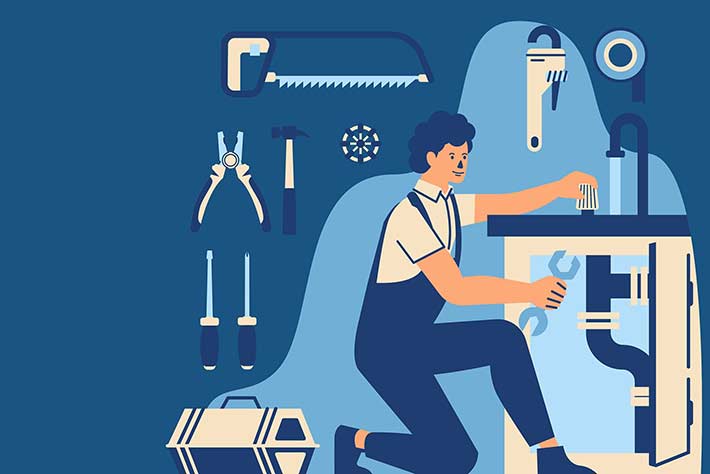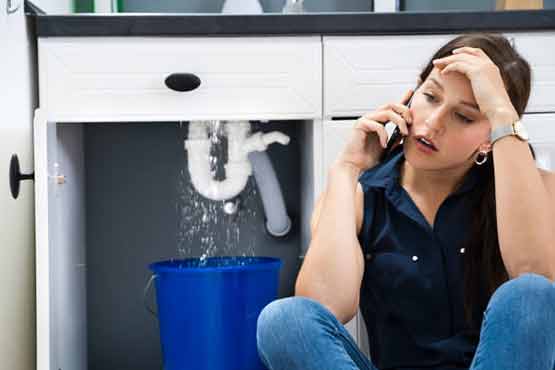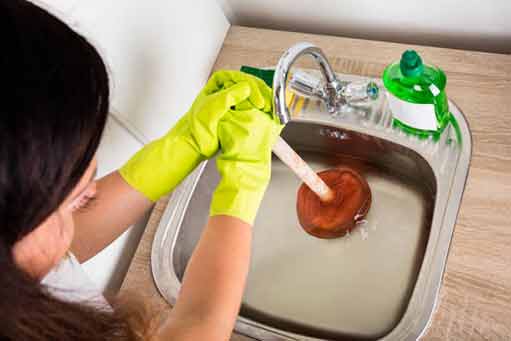
Ensuring the longevity and efficiency of your plumbing begins with maintaining your drainage system after hydro jetting. This essential post-hydro jetting care involves proactive measures and regular inspections to prevent recurring blockages and potential emergencies. This guide will get into the crucial steps and tips to keep your drainage system in optimal condition, helping you avoid unexpected plumbing issues down the line.
The risks of unprofessional hydro jetting
While hydro jetting can be an effective solution for clearing out stubborn drain clogs, it’s essential to understand the risks associated with unprofessional attempts. For example, if you try it on your own, it’s likely that you’ll need an emergency plumber. Improper handling of high-pressure water jets can lead to problems such as damage to your pipes, injuries, or flooding. Without the proper training and equipment, you may inadvertently cause more harm than good to your pipes. Moreover, without a trained eye to assess the situation comprehensively, you might miss underlying issues in your plumbing system that could escalate into emergencies down the line. It’s best to leave this task to experienced professionals to ensure a safe and effective cleaning process.
Recognizing signs of post-hydro jetting drainage issues
After a hydro jetting session, keep an eye out for signs of issues. These can manifest as slow drainage, unusual sounds, or recurring blockages. If you notice any issues, immediately call a plumber. Slow drainage may indicate residual debris or an underlying problem. Unusual sounds, like gurgling or bubbling, could suggest air pockets or improper resealing of pipes. Repeated blockages might also indicate that the process didn’t fully resolve the issue. Addressing these signs promptly can prevent more extensive and costly problems from appearing. Professional plumbers can also inspect your system and take appropriate action, ensuring your drainage system functions optimally.
The value of post-hydro jetting maintenance
Maintaining your drainage system after hydro jetting plays an important role in ensuring the longevity and efficiency of your system. Once your drains are thoroughly cleaned via a professional hydro jetting service, maintain them to prevent future clogs and issues. This ongoing care extends the benefits of cleaning them and saves you from the hassle and expense of dealing with recurring blockages. Regular maintenance routines also help keep your pipes in optimal condition. By addressing minor concerns early on, you can prevent them from evolving into major, costly ones. Investing in maintenance is a smart strategy to safeguard your plumbing, ensuring it operates smoothly for years to come.
DIY vs. professional post-hydro jetting maintenance
When it comes to maintaining your drainage system after hydro jetting, choosing between DIY efforts and hiring a professional is a significant decision. DIY maintenance can be cost-effective and allow you to take a hands-on approach to caring for your drainage system. However, you must know that DIY maintenance carries some risks.
In the unlikely event of a major emergency when mishandling things and significant water damage, you might need to quickly protect and move your belongings. This is where services like movingtransparent.com could be invaluable. They specialize in handling various aspects of moving, from household items to corporate relocation, providing a range of services tailored to safeguard your belongings in such scenarios, and can help you evacuate your belongings quickly to protect them.
On the other hand, professional maintenance ensures that experts with the right knowledge and tools are managing your system. They can identify and address potential concerns more effectively, ultimately preventing emergencies and ensuring your plumbing functions optimally.
Tools and supplies for post-hydro jetting care
When it comes to maintaining your drainage system after hydro jetting, having the right tools and supplies is a necessity. These items include drain snakes, plumbing wrenches, pipe inspection cameras, and a good-quality pipe wrench. You’ll also need a bucket, gloves, safety goggles, and a flashlight to ensure a safe working environment. Additionally, consider stocking up on eco-friendly cleaners and an auger for those stubborn clogs that may resurface. These tools will enable you to tackle minor issues promptly and maintain your system’s optimal performance. Ensuring you have these essentials on hand is a proactive step towards preserving the benefits of hydro jetting and preventing future problems. So, investing in these tools and supplies is a wise choice for homeowners looking to take charge of their post-hydro jetting maintenance needs.
Monthly maintenance routine after hydro jetting
Establishing a monthly maintenance routine after hydro jetting is key to keeping your system in top condition. Begin by visually inspecting your drains to ensure water is flowing smoothly. Next, flush hot water to remove any residual debris. Follow this up by using an eco-friendly cleaner to prevent the buildup of organic matter. Additionally, consider installing strainers to catch hair and debris before they enter the pipes. These simple yet effective monthly tasks can help maintain the benefits of hydro jetting and prevent clogs from reoccurring. By staying consistent with this routine, you’ll enjoy hassle-free drains and extend the life of your plumbing system.
Annual drain cleaning as part of post-hydro jetting maintenance
Annual drain cleaning is an important part of plumbing maintenance, especially after hydro jetting. While hydro jetting effectively removes stubborn clogs and buildup, complement it with regular professional cleaning. This annual service involves a thorough inspection and cleaning of your system by experienced plumbers. They can identify any emerging issues, remove accumulated debris, and ensure that your pipes are in optimal condition. This proactive approach helps prevent future clogs, leaks, and costly repairs. It’s like giving your plumbing system a yearly check-up to maintain its efficiency and reliability.
Environmentally conscious post-hydro jetting maintenance
Taking an environmentally conscious approach to post-hydro jetting maintenance is responsible and beneficial for your drainage system. Instead of resorting to harsh chemical cleaners that can harm the environment, opt for eco-friendly alternatives. Natural enzyme-based drain cleaners are a safe and effective option to break down organic matter without harming aquatic ecosystems. These simple steps minimize your environmental footprint while keeping your plumbing clean and functional.
Staying proactive and informed about your maintenance needs
Maintaining your drainage system after hydro jetting is fundamental to responsible homeownership. By following the advice and practices outlined in this guide, you can enjoy clog-free drains, prevent emergencies, and ensure the long-term health of your plumbing! Therefore, stay proactive and informed, and your drainage system will continue to serve you reliably for years.

